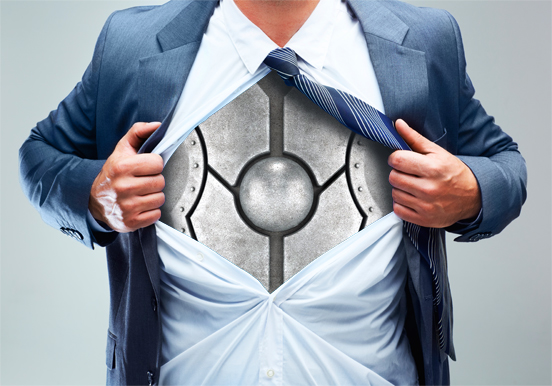A Tree is more than a Pile of Wood
by Artho Wittemann

Today, around 100 years later, representatives of a number of different schools have advanced the idea of inner diversity in their own unique way. But even if they all start out with the same fundamental idea, they end up with very different models of the psyche. Most of the differences arise because the postulated parts are defined by different criteria.
The varying definitions of the parts inevitably lead to different models of the psyche as a whole.
What criteria can we use to define an inner part of the psyche?
First of all there is the Content, meaning everything the part says, thinks or feels.
Then the visible Behaviour, the actions a part is triggering in us.
Then there is the Position, the place which it occupies in the system.
And, finally, the Function, the task which it fulfils for the inner or outer system.
If for example we name a part the “Inner Critic”, we are defining it by its critical content. A “Pusher” would be a part that constantly forces us to be active and by calling it “Pusher” we are using the behaviour it triggers for its definition.
Similarly this applies to the position. We can define a part based on whether we suspect it is on the surface, in the background or in the centre of the system and we can derive certain traits of the part from this. Perhaps we may then discover a “Receptionist” on the surface, a “Fire Fighter” that only comes out in times of danger or a “Director” who coordinates everything from a central meta-position.
In a similar way, the function a part plays in the system can be used for its definition. We may then postulate a “Provider” or a “Protector” or perhaps even an “Indulger”. These four criteria - content, behaviour, position and function, are doubtless important parameters necessary for defining and describing a part.
Yet, can they also capture the essence of the part?
When we know a person as a whole - what he says, how he behaves, where he is and what role he plays in society – do we then understand him? We instinctively sense that something is missing, that his true nature cannot be completely captured with this useful information.
This gives rise to a central question: does only the entire person have something like an intrinsic and unique nature? Is that nature the result of the specific composition and dynamic of the parts? Or, do the parts have their own kind of nature that we can describe independent of content, behaviour, function and position? And if so, how can we detect and define this nature?
I would like to invite you to watch me in a session with a client and witness the IndividualSystemic approach in finding answers to these questions. You can simply sit back and relax and watch the session. In between and at the end, I will explain how I classify and interpret the events.

The client visiting me today wants to gain insight into the inner causes of his constant lack of time. He wants to find out which parts ensure that he always plans to do too much and how he can work with them better. Thomas is highly dedicated and very valued in his job, yet at the same time he feels uneasy and overburdened. He repeatedly tries, without success, to allocate more free time for himself and family. He is even more surprised that he prefers spending his few remaining free hours alone in his room reading and listening to classical music.
These are the contents and patterns of behaviour that Thomas presents to me.
From this small amount of information, we could already quite easily derive an interim model about some of the parts that are active in Thomas: an Instigator is obviously very dominant, and on the surface a Family Man can indeed make his voice heard but not assert it, and a part that likes to remain alone and undisturbed, takes advantage of this gap, withdraws with a book and listens to music. We could call him the Creative Mind. These parts evidently compete with their different intentions and needs in Thomas.
Such argumentations seem instantly plausible. But are they really true? And how can we check their truthfulness?
If we want to find out how the Inner Self is built, we must always bear one fact in mind: the psyche escapes from the clutches of our awareness with great determination and intelligence.
Like almost all other living things, it wants to hide in order to protect itself. It camouflages itself.
It creates spatial ambiguity. Its surface does not reveal how determined, powerful and unambiguous it really is at its core. Its surface purports to be harmless, homogenous and normal. The tangible phenomena which it offers us can therefore symbolise anything: profound truth, banal distraction or barefaced lies. In a complex system, we cannot really know what a tangible phenomenon signifies, if we do not know the source of its origin. The same Content, the same Behaviour, can indeed, depending on the source, have a very different and opposing meaning.
For this reason, I initially abstain from any form of interpretation and I set all theoretical considerations to one side for the time being. At present I am only interested in one question: who in Thomas is talking to me right now? The Pusher? The Family Man? The Creative Mind? Another part? I don´t know the answer to that and I cannot know it at this point. Therefore, this question is of utmost importance. Because I ask who was selected from the Inner Self of the client to present and work on the issue with me. The outcome of our investigations will be essentially dependent on with whom I communicate right now. Does the part itself even have anything to do with the issue? Or is it trying to hide the creator of the problem from me? Only when we find the source that creates a problem, can we solve the problem in the long term. Therefore, at this stage I am more interested in the source of the content than in the content itself.

I also want to find out, which source I am now dealing with. For that reason, I make a somewhat bold move: I try to become similar to Thomas without needing to understand anything in doing so. We call this method of dialogue “like-to-like”. I don't just want to reflect or imitate the part- I want to meet it on its own terms. In doing so, I concentrate on the four non-verbal areas of our communication: body language and the language of the emotions, mental images and vibes. I let myself be led by them. Only then will spoken language play a part in it.
Thomas sits up straight in front of me, perhaps even somewhat rigidly and I adopt a similar posture. Thomas speaks quietly and completely without emotion even while telling me that his job is really “lots of fun” and that he works in a “super team”. So I behave similarly: I agree with him in a quiet, serious tone of voice and commend the advantages of a fulfilling job. Thomas unexcitedly describes his surprisingly jam-packed schedule. With an equally cautious voice, I express my amazement about the efficiency of his successful time management. At least this subject seems to be of real interest to him.
The content of our conversation suggests that I am actually now talking with a type of Pusher. Perhaps he is a Pusher who can actually cope with a lot in his serious manner. It confirms to me that he likes to work and that it largely contributed to Thomas´ career success. However, I then make an astonishing discovery: As we progress, even when the content of our conversation totally changes and Thomas emphasises how much he resents the lack of time for his family, how much he would like to take part in more activities with his children and how he misses the profound closeness with his wife, nothing at all changes in his flow of language, body language or in his unemotional manner.
Evidently, this part can always communicate in the same unaffected way about the most widely varied content, even that which is emotional and relationship focused.
After a while I say to Thomas “it seems like I am speaking to a very serious part of you that also deals with emotional themes in a totally unemotional manner. I would like to get to know it better! Where would it be in the room, if it were not in you?”
Thomas deliberated for a moment. “He is sitting here in front of me”, he said. He moved forward with the chair a little. In doing so, we reserve a special place for this part in the room and its position at the surface of the system, becomes more visible.
I now let myself be led by one single aspect: the relationship between this part and me. It sounds easy at first, but it conceals a big risk for me as a facilitator because I am now completely letting go of the secure railing that has endowed me some knowledge until now.
Yet I don't know whether this part will go beyond a demure and controlled recited list of all possible contents. I could now equally call this component the “Newsreader” and continue searching for the Pusher, the Family Man or the Creative Mind.
However, I assume that I previously only got to see it on the surface and that I have to get to know it on a deeper level to assess whether it really has anything to do with the issue that Thomas came to see me about.
Without wanting to trigger or achieve anything specific, I continue our conversation as before. Without emotion or orientation, somewhat rigidly and cautiously our conversation revolves around questions of closeness and distance in relationships, about the art of effectively managing time and the variety of leisure activities of today´s youth. It digresses on to contemporary events in poorer countries where such pleasure is viewed as pure luxury and only to be obtained in rich democracies which however, take a look at politicians, are no longer what they once were. Although their treasures of classical literature and music would have so much to offer us and to be fair even some modern groups are making great music and about how we can indeed learn from young people.
The longer we talk in this way, the more I get the impression that this part is equipped with a surprisingly large range of contents. I now lead the discussion myself in associative steps from classical music to Alexander the Great, who also loved art, then to a body therapy called Alexander-Technique that he still doesn´t know but would like to learn about, from there on to human dignity in general and Casting-Shows in particular. Without any visible hesitation, he continues willingly but with caution, he is interested but without emotion and he contributes some of his own rational ideas in the process.
In many people, there is a part that is ready to embrace every type of content like a chameleon and in doing so, to not indicate any one direction themselves. I name such parts “Universal Voices”. I seem to be now confronted with one of those “Universal Parts”.
In this manner, we are indeed not getting any closer to Thomas´ original issue and after an hour at the latest, a casual observer would think that a shrewd therapist is enjoying an hour of small talk, at the expense of his client. It seems as though nothing is taking place at all, perhaps apart from one thing: the strange coexistence of an increasing flexibility of content on the one hand and physical-emotional rigidity on the other. As if wrapped up in a bubble of all the contents and serious restraint, we sit opposite one another. Like-to-like, when successful, resembles a hypnotic trance, which continually and indiscernibly intensifies, while the participants by and by lose their sense of time.
This is the desired effect. Like a kind of blind flight, it leads us deeper into the part and exposes its way of being. One thing at least becomes clearer to me from this session: you could not argue with this part of Thomas, even if you wanted to. Similar to a master of Tai-Chi, he matches every movement in terms of content, while he simultaneously remains very controlled and focused.
Right when I want to get our dance between different topics back in groove with a few new contents, something unexpected takes place: the part suddenly becomes totally silent. He looks at me quietly. “We could of course carry on like this for an eternity”, he dryly declares. And almost approvingly he adds, „Not bad!” Then he falls silent.
„You don't want to anymore?” I ask him?
He shakes his head. “We don´t have to” he said.
“Does anything have to be at all?” I answer in reply.
“No. Everything is just fine.”
“Okay!” I say.
I carry on in like-to-like. Even if, as opposed to previously, we no longer speak, something has indeed remained unchanged within him: he has not abandoned his emotionless reserved posture. I continue to follow him. Minutes pass by, he looks at me indifferently, empty and speechless.
„Now you are completely empty“, I say. He nods in agreement.
„Are you waiting for something? “ I ask. He shakes his head.
„Me neither“ I answer.
We fall silent again. “One can really talk to you about everything”, I utter, breaking the silence. “Astounding!”
“So what?” He asks in reply.
„That`s right! “, I say “that´s the right question! So what?”
Yet another period of silence and this neutral, empty, unconnected mood ensues.
“Isn´t that great!“, I start again, “one can talk for hours on end about God and the world and end up at the exact same point where one started. How does one learn to do that?”
“What do you mean? “, he asks slightly irritated, “I am not doing anything at all!”
“Yes, precisely”, I respond, “that's exactly it. And what is that good for?”
He continues to be silent, but almost imperceptibly his mood changes once again. The atmosphere between us becomes colder and emptier; his face seems more withdrawn and fiercer. I continue with similar behaviour.
“It is certainly not as nice with you as it was at the start!”, I tell him. “I suppose the majority of people contend themselves with your cautious words and then leave you in peace”:
“Exactly! And so why don´t you leave me alone? I thought it was supposed to be about Thomas´ lack of time. What have I got to do with it? If he were as silent, as I am now, at least he would have more time for himself”.
At the moment, it feels as though I have reached an impasse. I can neither make sense of his many contents nor his reserved silence, nor his evident resistance at present. There are only two ways of interpreting this situation: either I made a mistake and went down the wrong track or I am now exactly where the part wants me to be: confused, helpless and almost inclined to withdraw. I ask myself what it's like for his wife and children when they encounter this behaviour. Or do they never really catch sight of it because he has already long since escaped into a retreat?
For the next half an hour, almost no words are exchanged, but the tension between us gets stronger. It seems like the part has to exert itself to keep its composure; the sense of cold resistance and reticence becomes more visible. I reinforce this behaviour and from time to time I translate it into words. Apart from that, I don´t do anything. I rely on being connected on his own terms to deepen his attitude.
“Are you angry with me?”, I eventually ask him after a long pause.
“No!”, he answers, “not at all!”, to his own surprise, with these words tears start rolling down his cheeks
„Why do you behave like that towards me then?”
“I don’t even know why myself! I just have to be that way, but I don´t know why.”
“What good does it do when you are like that?”
“It is at least quiet. No arguments. No yelling. It is at least peaceful.”
With these words, pain overcomes him. He cries bitterly.
When he has calmed down a bit, I urge him to concern himself with me again. He is now changed, he seems to be approachable and yet strong.
“I believe I am now starting to understand you”, I tell him, “you are trying to make peace in your own way”.
“Yes”, he says, “I want peace to prevail.”
“And how do you achieve that? “By not wanting anything for myself”, he says, “by only doing and saying that what helps everyone”.
“And what helps everyone?”
<p“That I am there for them, that I understand them and that I do not need much for myself”. “And what would you need?”
“I just want things to be peaceful, friendly and nice between people. That we all have a good life together- but that isn´t possible. At most when Thomas reads or listens to music, I can achieve a bit of that. But that is not the case with people”.
At its core, this part, which appeared to be so restrained and unemotional at the start, is quite the opposite of its surface: it is sensitive and loving. It wants peace to prevail. Everyone should fit in and be well. He does everything to contribute to its success and is at the same time firmly convinced that this can only function in an indirect manner: through performance, adaptation and withdrawal, but not through direction relationships.
At the start of my investigation, I designed a small preliminary model in order to understand and describe Thomas´ inner system. I imagined a Pusher, a Family Man and a Creative Mind, all of whom wrestled for attention in Thomas. Then, I seemed to speak to a neutral “Newsreader”, a sort of “Universal Part”, with whom you can talk about everything.
If we now step back a little and review the order of events as a whole, to our surprise we see that all of these elements are connected aspects of a single part. Like a large tree, it unfolds its branches and twigs with astonishingly coherent logic. Hereafter, we want to uncover the inner logic of this part in even greater detail.
The psyche and the world surrounding us are systemic phenomena. Inside and out, powers with differing tendencies and intentions come into conflict with one another and wrestle for a strong position. The contrary skills and needs of the parts generate tension, inconsistency and struggle.
The Inner Persons counter this threat with a strategy which can be best described with the term “self-repression”. “Self-repression” initially appears very similar to repression but it is actually the contrary. Repression takes place between rival powers whereby one side defeats the other and then suppresses them. The suppressed powers naturally don’t want to accept it. They will do anything to liberate themselves and they will welcome any external support, for example in the form of therapy.
It is completely different with self-repression: when someone barricades himself in a small room because he feels threatened and misunderstood by the world that is an ideal situation and not a misfortune for him. He does not wait to be freed. On the contrary: nothing makes him more nervous than footsteps coming closer from outside and someone making it as far as the walls of his room. He will hope not to be found because he is convinced that his misfortune will then start anew. If he is wise, he has camouflaged the outside of the wall so well that one cannot recognise it at all.
Self-repression is a solution for the repressed.
It does not want to be liberated.
According to its original nature, the part in Thomas is a powerful, friendly, creative and cautious man. We could call this its Essential Attitude. It needs a mild climate of thoughtfulness, mutual support and intellectually stimulating athmosphere to feel at ease and to find complete expression.
This climate was not provided by his original family. Instead there was a lot of pressure to perform, dissatisfaction and disputes - all the things that caused him pain, while he naturally just wanted to freely give and contribute.
Those in his environment ignored the powerful love of his Essential Attitude.
So in this part, an unconscious process of self-repression began. To no longer abandon his love and need for harmony in the unfriendly atmosphere of his parental home, the part hid its natural impulses under a hard, cold layer. This hardness and coldness is an isolated and overemphasised aspect of his own will. We can call this new behaviour a Reactive attitude. It superimposes and protects the Essential Attitude. The result is an emotionless state which was apparent to me upon first meeting Thomas. For the part itself, the emotionless state signifies a great success because its love must no longer suffer any dismissive painful responses.
This did not bring the process of self-repression to an end. Because the cold dismissive layer protecting the Essential Attitude, was to become a target of criticism again. Therefore, it had to be surrounded by a second, softer Reactive attitude which provided a smaller target. Thomas now appeared to be a mellower, more silent person, who didn´t need much or demand anything and who simply dodged every looming conflict.
Nevertheless, the part was still in a dilemma: it wanted to continue promoting solidarity in accordance with its nature. Paradoxically, that had to take place without deep personal contact. Solidarity without establishing contact resembles trying to fit a square peg into a round hole, but it found a solution:
It was diligent. This way, it could show its good will, though indirectly, through its accomplishments. Also, it was an approving business partner who was void of emotion that embarked upon everything. This way, it could achieve its need for togetherness and harmony. Diligence and adaptation constituted the most important qualities of the third and topmost of the Reactive attitudes.
Both of these qualities can indeed be named “Pusher” and “Newsreader”. You can describe their Contents and Behaviour and determine their Position and Function in the system, relatively easily.
However, it is a Reactive attitude that we describe here. The parameters cannot explain that we are dealing with two aspects of the same source which expresses its original nature in a distorted and incomplete manner.
If we define the parts by their Reactive attitudes then we run the risk of establishing the Reactive attitudes as natural qualities of the inner part.
We are then content with knowing what they say, what they do, who they are and what functions they fulfil, without searching for their entire form and their actual essence.
Consequently we cannot recognise that the Pusher, the Family Man, the Newsreader, the silent nothingness, the cold resistance and even the Creative Mind that retreats to read and listen to music, all emanate from the same complex form. Only when we recognise them as a complete unit, can we truly understand what has befallen this part, how it responded to it and who it is by nature.
The question confronting us with every new investigation of the psyche and its parts is therefore: does the structure that we recognise, demonstrate a part or does it just show the extract of a part? Do we see an entire tree or do we see a branch with twigs that certainly looks like a tree in itself?
Many complex systems of nature are comprised of parts that are built in a similar way to the whole. Chaos theory calls this phenomenon “self-similarity”.
In actual fact, the parts of the psyche bear an uncanny resemblance to a whole person. Every part can express itself through the same channels as a person does as a whole. Again similarly to the whole person, it always speaks in five languages: body language, emotions, images, words and energetic fields. That already bears a striking resemblance to a person. Furthermore, it can also be similarly complex and headstrong like a whole person. Every part makes fundamental decisions, protects itself with sophisticated strategies and asserts its will without our conscious cooperation. In order to express this complexity, autonomy and individuality, IndividualSystemics names the parts of the psyche, the “Inner Persons”.
Yet if the layers of Inner Persons can be so different, as in our example with Thomas; if one and the same part can talk a lot at first and then be totally silent; if the same part can work too much and can then listen to classical music by himself; if the same part can at first be completely disconnected and then completely connected - how can I know for sure, that we are dealing with the same part and not with different parts?
The theoretical answer to this important question is easier to find than its practical answer. When the facilitator has established stable contact with the Inner Person, which includes body language, emotions, images and the energy field, he easily realises, when one Inner Person has disappeared and another appears. No matter how diverse the attitudes of an Inner Person may be expressed, a central and unique quality is always retained. Furthermore, the different layers are connected in a meaningful way, which gets ever clearer the deeper you delve.
In practice this poses a great challenge for the facilitator. He must unconditionally allow the part - not the contents of the part - to lead him. The radical discrimination between content and source is a fundamental requirement in this work. One can never know who will ultimately appear under the layers of self-defence.
Reactive attitudes are unconscious, automated and chronic reactions to people, life and the world. Every reactive attitude is the attempt of the Inner Person to preserve and enforce its original will to love with a new strategy. With every new strategy, the will moves a bit further away from the love. On the very surface, the will appears mostly in a distorted form and there is barely anything of the original love to be seen.
We find the original nature of the Inner Person on its deepest level, and only here do we know who it is. For the first time it is made aware of its own reality. It awakens out of a trance that it created itself with its reactive attitudes and finds back to its origins. This is of central importance, a turning point, because it is here where a diametric reversal of its will takes place. Until now, it was only concerned, unconsciously, with defending and maintaining its reactive attitudes. But now it is longing to recapture and to re-live its original form.
It may have occurred to you that I only concerned myself with the inner construction and inner dynamic of the parts here, and not with the dynamic that evolves between parts. You may ask yourself whether the systemic interplay of the parts with one another does not play a role in IndividualSystemics. It does play a role, but a secondary one at the beginning of a process. There is a simple reason for this.
As I tried to demonstrate, already just the inner structure of one part produces manifold and confusing phenomena. When we do not know that these phenomena are all coming from within the same source, we are inclined to construe the same phenomena as the result of a systemic interdependency which takes place between several parts. We then search for an explanation in the system and our interpretation will lead us to a totally different result. Only when we recognise the source, from which a phenomenon derives, can we truly understand it. Therefore, IndividualSystemics insists on investigating and illuminating the micro-structure of an individual part through direct contact. It then becomes clear from this alone, which phenomena emerge from one part and which emerge from the system.
We can dramatically reduce the complexity of the psyche when we view it as a system of autonomous parts and when we recognise how the parts themselves are built. The tangle of leaves, twigs, branches and trunks clear out- and we see the trees as a whole. And with every whole tree we get a clearer picture of the whole forest.
Die Architektur der Innenwelt
Ein Buch von Artho S. Wittemann19,50 € als Ebook | 24,70 € als Buch | 380 Seiten
Jetzt als Ebook in unserem Shop erhältlich: Hier klicken! »
Oder als gedrucktes Buch bei Amazon: Hier klicken! »
Und in Ihrer Buchhandlung mit der ISBN: 978-1508934479
"Mir wurde gesagt, dieses Buch würde "Die Intelligenz der Psyche" noch toppen, und so ist es. Es greift noch ein Stück tiefer ohne dass ich je das Gefühl eines Wiederkäuens hatte. Es lohnt sich auch für Besitzer seines Vorgängerbuchs "Die Intelligenz der Psyche". Wer die Psyche verstehen will, kann kaum etwas besseres finden."
R. Küster
































